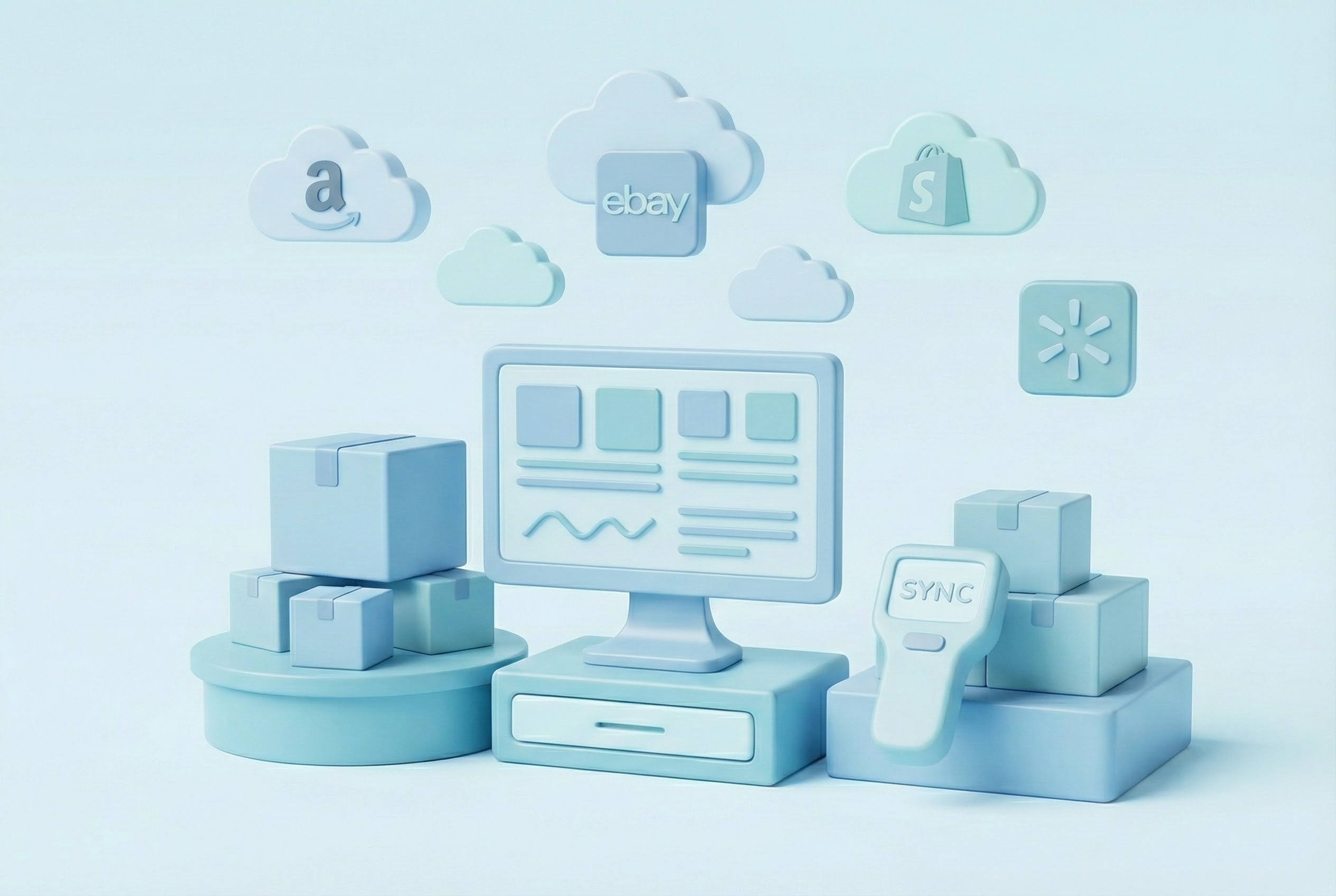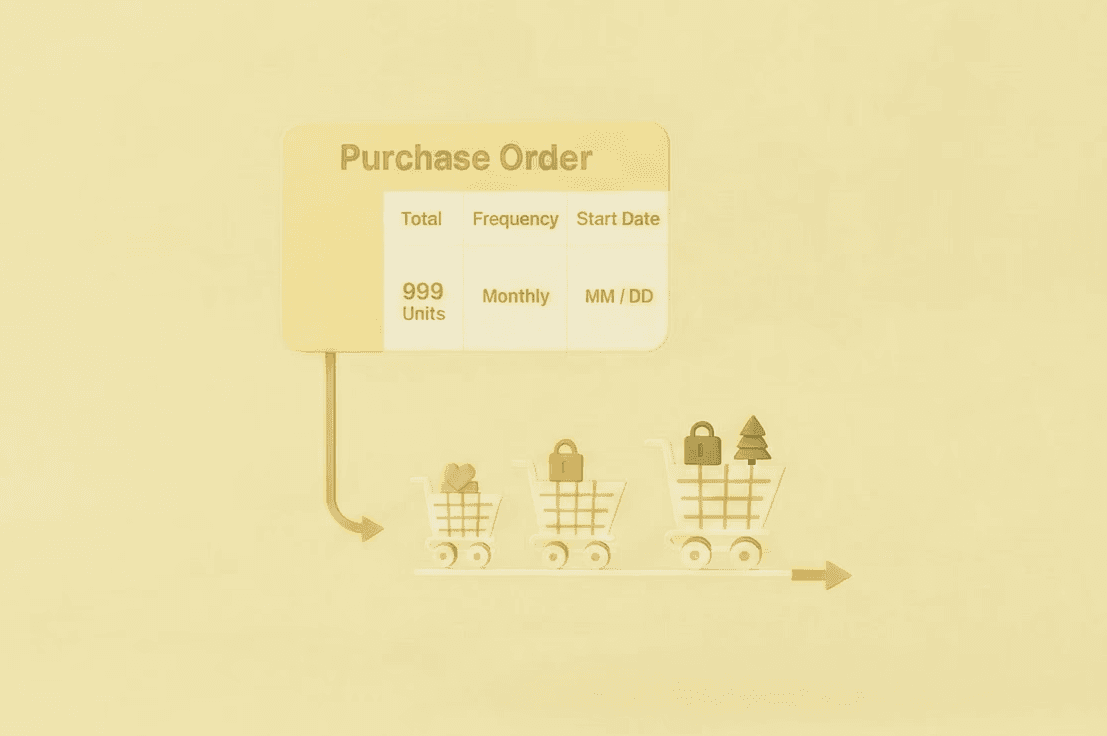Blog
Educational
10 Must‑Know Multichannel Inventory Sync Solutions Ranked by Reliability (Listicle)
10 Must‑Know Multichannel Inventory Sync Solutions Ranked by Reliability (Listicle)
Laura B
Marketing Analyst
Oct 16, 2025
10 Must-Know Multichannel Inventory Sync Solutions — Ranked by Reliability
The most reliable multichannel inventory sync platforms keeps every SKU (each size/color/version) aligned across every channel (your site, marketplaces, POS) and every location (warehouses, stores, 3PLs) in near real time. The leaders don’t stop at “count updates.” They connect sync to weekly decisions: what to buy, what to move, and what to promise customers—with a simple approval workflow you can run without a big planning team.
What “multichannel inventory sync” really means
If you sell in more than one place, you’ve probably felt the pain: a product sells on Amazon, but your website still shows ten in stock; a store sells two units, and eBay doesn’t get the memo. Multichannel inventory sync is software that updates all of your channels when anything changes—an order, a return, a transfer, or a supplier receipt. Done right, it happens fast enough that overselling is rare and customers get what they were promised.
But there’s a second half to the story. Stock numbers that are accurate still won’t help if you don’t know what to buy next, which warehouse should ship, or how to keep selling while inventory is inbound. The best systems connect sync to a closed loop:
Forecast → Ranked shopping list → Supplier POs → Transfers → PO-driven ETA windows on PDP/cart → Learn.
If your tool only syncs, you still live in spreadsheets and “rush buy” emergencies. If it syncs and completes the loop, your Fridays get quieter.
How this ranking works
Latency & resilience: Near-real-time updates (seconds to a minute), retries, conflict checks, health alerts.
Breadth & depth of integrations: E-commerce, marketplaces, POS, 3PL/WMS, ERP, accounting—plus the quality of those connectors.
SKU & location awareness: Each variation should be managed per location; size/color/region really do behave differently.
Closed-loop execution: Forecasts that become budget-aware buys, supplier-ready POs, transfer tasks, and customer-visible ETAs.
Business fit & scale: From a lean 2-person team to ERP-anchored enterprises; steady at thousands of SKUs/orders per day.
The most reliable solutions
1) Tightly — An “Inventory OS” that turns sync into weekly action
Why it’s #1: Tightly treats sync as the starting line, not the finish. When a sale or receipt occurs, counts update across channels quickly; then the platform immediately answers: What should we buy or move this week, within budget, with supplier rules, and what can we promise to customers right now? That one loop is why lean teams feel calmer by week two.Tightly stands as the benchmark AI‑driven solution for real‑time multichannel inventory synchronization, specifically engineered for Shopify and DTC retailers scaling from startup to enterprise levels.
Core Multichannel Sync Features:
Multi‑Store Connection automatically synchronizes inventory across unlimited Shopify stores and external channels
Smart Replenishment uses AI to predict demand and trigger purchase orders before stockouts occur
InStock feature provides real‑time inventory updates with sub‑minute synchronization across all connected platforms
Unified dashboard eliminates data silos by connecting ERP, WMS, and 3PL systems seamlessly
How it works:
Tightly forecasts demand for each SKU at each location, and shows the drivers (seasonality, promo, recent trend) with a confidence range you can explain to finance. Those forecasts become a ranked shopping list—think “buy these first”—with days to stockout and expected revenue saved. You set a budget cap, and the list respects it. When you approve, Tightly builds supplier-ready POs that honor MOQs, case packs, price breaks, lead-time profiles, and it keeps line-level diffs so approvals are painless. Before spending, it runs a transfer vs. buy simulation; if moving 120 units from West to East beats buying 500 new, it tells you—saving time and cash. Finally, when a PO is on the way, Tightly pushes PO-driven ETA windows (“Ships by Nov 7–10”) to product pages and order flows, so you keep selling honestly even when on-hand is tight.
Best for: Multi-channel brands (often $1–10M+) with one or more warehouses/stores/3PLs who want the whole loop to run weekly without hiring a planning team.
Geographic Coverage:
Full support across North America, UK, and EU markets with localized compliance and customer service teams.
2) Inventory Planner — Pragmatic planning with dependable sync
What it is: A popular planner that integrates well with major sales channels and gives you solid per-SKU replenishment workflows. It’s the “get your house in order” choice for teams stepping up from spreadsheets.
Reliability angle: Sync is steady; centralized purchase suggestions reduce “oops” moments. For many brands, it’s the fastest route to sane reordering.
Ask in a demo:
Can it show per-location confidence bands and driver attributions for a top SKU? Can it rank buys by days-to-OOS and revenue saved while honoring a weekly budget? How far can it go with transfers and ETA windows for customers?
Best for: Shopify-friendly stacks and planner-light teams that want quick wins.
3) Netstock — Policy-driven optimization for ERP-anchored operations
What it is: A planning/optimization brain that sits atop your ERP. It’s built to right-size stock across multiple warehouses and surface exceptions so planners don’t drown in noise.
Reliability angle: When ERP is the “source of truth,” Netstock keeps multi-warehouse policies consistent, and sync follows suit. You get fewer feast-or-famine cycles.
Watch closely: Latency. If orders and receipts take hours to reach Netstock (and then your channels), you’ll carry bigger buffers “just in case.” Ask for time-stamped flows from order → pick/ship → receipt → plan update.
Best for: Mid-market/enterprise teams that live in ERP and want steady stocking rules.
4) Slimstock — Enterprise depth across regions and assortments
What it is: A comprehensive planning suite used by complex businesses (multiple countries, product families, S&OP/IBP). It offers governance, audit trails, and network-wide optimization.
Reliability angle: Disciplined processes yield stable sync; the tool’s depth keeps policies aligned across a sprawling footprint.
Best for: Enterprises that need structured planning ceremonies—and the ops culture to match.
5) KatanaMRP — Multichannel sync plus light manufacturing
What it is: Inventory and production planning in one system. If you assemble/kit/make products, Katana tracks components, work-in-progress (WIP), and finished goods, so channel counts reflect what you can actually build.
Reliability angle: You avoid the classic “one tiny part is missing, so the site was lying” problem. Sync mirrors your true build capacity.
Be realistic: If you’re purely buying and selling finished goods, ensure the planning benefits justify the MRP footprint.
Best for: Makers who also sell across multiple channels.
6) Odoo — Modular ERP where inventory lives beside purchasing, accounting & more
What it is: A suite of modules (ERP + apps) you can mix to cover inventory, purchasing, accounting, CRM, manufacturing, and more—so data lives in one place.
Reliability angle: When connected well, Odoo gives you consistent truths across departments and channels. That coherence keeps sync clean.
Caution: Integration lift can grow. The loop—orders/receipts → plan → POs/transfers → channel updates—must stay fast. If it drifts to days, teams compensate with extra safety stock and side processes.
Best for: Businesses consolidating tools into one suite with clear ownership of data.
7) Onebeat — Store allocations & transfers as a weekly superpower
What it is: Built for retailers with many stores and many sizes/colors (fashion, footwear, specialty). It excels at allocating the right mix and re-balancing with transfers before you overbuy.
Reliability angle: When transfers execute quickly, your size-level availability improves, channel counts stay true, and “sorry, we’re out” moments drop.
Focus in pilot: End-to-end speed—recommendation → store pick/ship → receiving → plan update. If that cycle is quick, sync stays honest.
Best for: Store networks where getting the right size/color into the right store is half the battle.
8) EazyStock — Mid-market, policy-driven multi-warehouse optimization
What it is: A stocking policy engine often layered on ERP to get safety stock and reorder points right across warehouses.
Reliability angle: Consistent rules reduce surprise stockouts and wild swings that confuse your channels.
Verify: The cycle time from ASN → receipt → inventory update → plan. You want to see it live with timestamps; slow cycles quietly inflate safety stock.
Best for: Distributors and mid-market retailers with broad catalogs and a few nodes.
9) Singuli — ML-heavy forecasting that feeds PO planning
What it is: A modern forecasting engine that leans into machine learning, especially around promotions and trends, and pairs it with purchasing workflows.
Reliability angle: Better signals → fewer sync shocks (no more “we thought it would sell like last year’s drop”). When plans match reality, channel counts behave.
Guardrails: Demand explainability (“why this number?”) and budget caps so “smart” forecasts don’t become reckless buys.
Best for: Data-forward teams eager to experiment without losing spend discipline.
10) Shopify Native (Locations/POS) or Equivalent Baseline — The starting point to compare
What it is: Your commerce platform’s own multi-location model, POS handling, and basic stock logic (often extended with apps).
Why include it: It’s where many brands begin—and it’s the yardstick for “does a specialized tool add enough beyond basic sync?”
Reliability angle: Stable for straightforward setups. As complexity grows, you’ll want the ranking, POs, transfers, and ETA windows that specialized platforms add.
A human story: sync that actually saves a weekend
It’s Friday morning. Black Joggers (Size M) exploded overnight on Amazon after a creator video. Your Amazon quantity drops; within seconds your site, eBay, and Walmart reflect the new number. No oversells. In your planning view, Joggers jump to the top of your ranked shopping list because the math sees days to stockout, margin, and revenue at risk. The system notices your West warehouse is heavy and your East warehouse is light. It suggests a transfer of 120 units West → East, arriving by Tuesday—faster and cheaper than buying anything new. It also builds a PO of 500 units that hits the price break and matches your vendor’s MOQ. On your site, the product page flips from “In stock” to “Ships by Nov 7–10” when on-hand dips, pulling that window from the inbound PO. Your CX team can now answer the “When will it ship?” question confidently. You approve the buy and the transfer, close your laptop at 5, and for once don’t dread Monday.
How to choose
Map your world in one page. Channels (site, marketplaces, stores), locations (DCs, stores, 3PLs), whether ERP sits at the center.
Write what “good” looks like. “We approve one weekly list; POs go out in 24 hours; transfers beat rush buys; customers see honest windows.”
Pilot 6–8 weeks on top 100 SKUs. Keep a firm weekly budget cap; send real POs; try ETA windows on a handful of SKUs.
Measure five KPIs only. Stockout sessions ↓; PO cycle time ↓; expedites ↓; backorder conversion ↑; cash sitting in slow movers ↓.
Buy the tool that moved your numbers, not the one with the flashiest dashboard.
FAQs
How fast is “reliable” sync?
Aim for seconds to a minute. The best tools retry failed updates, check for conflicts, and keep running during hiccups. Anything slower invites errors, cancellations, and support tickets.
Do I still need forecasting if I already have sync?
Yes—especially once you have lots of SKUs or more than one location. Sync tells you what changed; forecasting plus a ranked shopping list, supplier-ready POs, and transfer suggestions tells you what to do next so you buy smarter and avoid emergencies.
What if we already use an ERP?
Choose a planner that’s comfortable on top of ERP systems (e.g., Netstock, EazyStock, Odoo) and insist on a live demo showing order → receipt → plan update latency end-to-end. Slow data = extra safety stock.
We assemble or make products—does that change the choice?
Yes. If you kit or manufacture, KatanaMRP aligns channel counts with real production capacity by tracking components, work-in-progress (WIP), and finished goods.
How do top solutions maintain reliable real-time synchronization?
They use API-based connections and automated workflows to push updates within seconds of any sale, return, receipt, or transfer. Under the hood: redundant data paths, error checking, and instant failover. The most reliable platforms process updates in under 60 seconds and resolve conflicts when multiple channels change the same SKU at once.
Which sales platforms and integrations are typically supported?
Leading tools connect to Shopify, Amazon (global marketplaces), eBay, Walmart, Etsy, and Facebook/Instagram Shop, plus 3PL/WMS, ERP (e.g., NetSuite, SAP), and accounting software like QuickBooks and Xero. Depending on the target market, expect ~20 to 100+ integrations.
How scalable are these solutions for growing e-commerce businesses?
The best platforms scale from a single store to multi-channel, multi-location operations—handling hundreds to millions of SKUs and dozens to thousands of daily orders without slowing down. Look for modular features and pricing tiers that expand as your complexity grows.
What features actually prevent stockouts and overselling across channels?
Start with real-time sync, low-stock alerts, and intelligent reorder points. For stronger protection, add AI-powered forecasting, automated PO creation, and safety-stock calculations. If you run multiple locations, per-location tracking, reserve stock, and inter-location transfers keep promises accurate and inventory balanced.
Laura B
Marketing Analyst
Share






